|
Books Should Be Free Loyal Books Free Public Domain Audiobooks & eBook Downloads |
|
|
Books Should Be Free Loyal Books Free Public Domain Audiobooks & eBook Downloads |
|
Science |
|---|
|
Book type:
Sort by:
View by:
|
By: Edgar Rice Burroughs (1875-1950) | |
|---|---|
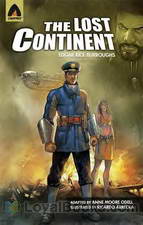 The Lost Continent
The Lost Continent
Originally published under the title Beyond Thirty. The novel, set in the year 2137, was heavily influenced by the events of World War I. In the future world depicted in the novel, Europe has descended into barbarism while an isolationist Western Hemisphere remains sheltered from the destruction. The title Beyond Thirty refers to the degree of longitude that inhabitants of the Western Hemisphere are forbidden to pass. | |
By: Edmond Halley (1656-1742) | |
|---|---|
 Miscellanea Curiosa, Vol 1
Miscellanea Curiosa, Vol 1
"The Royal Society is a Fellowship of many of the world's most eminent scientists and is the oldest scientific academy in continuous existence." . As scientists have explored the world around them, observed and tried to explain natural phenomena, they have been invited to present papers to the Royal Society. Edmond Halley was an eminent member of the society and gathered together some of the most interesting papers of his day. Today, we may see errors in the logic or calculations, based on current knowledge, but these papers are unedited and as presented at the time and show how scientific knowledge was expanding in the late seventeenth and early eighteenth centuries... | |
By: Edmond Hamilton | |
|---|---|
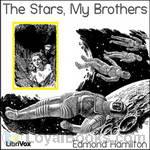 The Stars, My Brothers
The Stars, My Brothers
Edmond Hamilton (1904 – 1977) had a career that began as a regular and frequent contributor to Weird Tales magazine. The first hardcover publication of Science Fiction stories was a Hamilton compilation, and he and E.E. “Doc” Smith are credited with the creation of the Space Opera type of story. He worked for DC Comics authoring many stories for their Superman and Batman characters. Hamilton was also married to fellow author Leigh Brackett. – Published in the May, 1962 issue of Amazing Stories “The Stars, My Brothers” gives us a re-animated astronaut plucked from a century in the past and presented with an alien world where the line between humans and animals is blurred. | |
By: Edmund Christopherson (1903-1974) | |
|---|---|
 Night The Mountain Fell; The Story Of The Montana-Yellowstone Earthquake
Night The Mountain Fell; The Story Of The Montana-Yellowstone Earthquake
A severe earthquake, centered in the vacation area of West Yellowstone, Montana, shook the ground and its inhabitants and visitors on August 17, 1959, at 11.37 pm. A mountainside fell, a lake formed, roads and houses disappeared, people were trapped, people died. The author of this narrative went to the area the day after the quake, took first-hand stories of the catastrophe, researched in the following months, and wrote this account within a year of the shaking. The printed source has many informative photographs. - Summary by David Wales | |
By: Edward Bellamy (1850-1898) | |
|---|---|
 Looking Backward: 2000-1887
Looking Backward: 2000-1887
Looking Backward: 2000-1887 is a utopian novel by Edward Bellamy, first published in 1888. It was the third largest bestseller of its time, after Uncle Tom’s Cabin and Ben-Hur: A Tale of the Christ.The book tells the story of Julian West, a young American who, towards the end of the 19th century, falls into a deep, hypnosis-induced sleep and wakes up more than a century later. He finds himself in the same location (Boston, Massachusetts) but in a totally changed world: It is the year 2000 and, while he was sleeping, the U... | |
By: Edward Elmer Smith (1890-1965) | |
|---|---|
 Masters of Space
Masters of Space
The Masters had ruled all space with an unconquerable iron fist. But the Masters were gone. And this new, young race who came now to take their place–could they hope to defeat the ancient Enemy of All? | |
By: Edward Frederick Knight (1852-1925) | |
|---|---|
 Cruise of the Falcon - A Voyage to South America in a 30-Ton Yacht
Cruise of the Falcon - A Voyage to South America in a 30-Ton Yacht
In this fine sailing and exploring yarn, Edward Frederick Knight , sometime English barrister, journalist, sportsman, and amateur seaman, conspires over a fish dinner in Harwich to buy and refit the tiny yacht Falcon, recruit a crew of four , and sail across the Atlantic Ocean to South America. This they do, despite naysayers who advised painting the yacht's name conspicuously on her keel to aid identification when found floating upside down in some foreign sea. The book provides detailed descriptions... | |
By: Edward George Bulwer-Lytton (1803-1873) | |
|---|---|
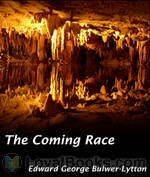 The Coming Race
The Coming Race
Edward George Earle Lytton Bulwer-Lytton, 1st Baron Lytton (1803-1873) was an English novelist, poet, playright, and politician. Lord Lytton was a florid, popular writer of his day, who coined such phrases as “the great unwashed”, “pursuit of the almighty dollar”, “the pen is mightier than the sword”, and the infamous incipit “It was a dark and stormy night.” Despite his popularity in his heyday, today his name is known as a byword for bad writing. San Jose State University holds... | |
By: Edward J. Ruppelt (1923-1960) | |
|---|---|
 The Report on Unidentified Flying Objects
The Report on Unidentified Flying Objects
'Straight from the horse's mouth', as they say. Edward Ruppelt was the first head of the U.S. Air Force's Project Blue Book, the official project initiated to investigate UFO reports beginning in 1952. This report from 1956 takes us inside these initial investigations, separates fact from fiction, and gives insight into who, when, where, and how sightings were reported and researched in open-minded fashion (for which Ruppelt was renowned), rather than in the typical hushed and secretive (and censored) manner most often associated with government and military reports which are released to the public... | |
By: Edward Jesse (1780-1868) | |
|---|---|
 Anecdotes of Dogs
Anecdotes of Dogs
"Histories are more full of examples of the fidelity of dogs than of friends."The character, sensibilities, and intellectual faculties of animals have always been a favourite study, and they are, perhaps, more strongly developed in the dog than in any other quadruped, from the circumstance of his being the constant companion of man. I am aware how much has been written on this subject, but having accumulated many original and interesting anecdotes of this faithful animal, I have attempted to enlarge the general stock of information respecting it... | |
By: Edwin Abbott Abbott (1838-1926) | |
|---|---|
 Flatland: A Romance of Many Dimensions
Flatland: A Romance of Many Dimensions
If you've never heard the term “Mathematical Fiction” before, Edwin Abbott Abbott's 1884 novella, Flatland can certainly enlighten you! Flatland: A Romance of Many Dimensions was published in 1884 and since then, it has been discovered and re-discovered by succeeding generations who have been delighted by its unique view of society and people. The plot opens with a description of the fictional Flatland. The narrator calls himself “Square” and asks readers to “Imagine a vast sheet of paper on which straight Lines, Squares, Triangles, Pentagons, Hexagons and other figures, instead of remaining fixed in their places, move freely about... | |
By: Edwin E. Slosson (1865-1929) | |
|---|---|
 Easy Lessons in Einstein
Easy Lessons in Einstein
Published in 1920, Slosson’s Easy Lessons in Einstein is one of the first popularizations of Einstein’s theory of relativity. This book is meant to convey to the general reader the ideas of relativity in non-mathematical terms, by the use of thought experiements and pop-cultural references of the day. This edition also includes a short article by Einstein on Time, Space and Gravitation. | |
 Creative Chemistry
Creative Chemistry
Slosson reviews the transformation of alchemistry from an obscure and imprecise practice to the science of chemistry. Along the way, he explains how the modern industrial world now relies on fertilizers, explosives, textile materials, polymers and metals.By exploring the properties of a once undervalued element, the high strength of vanadium steel made the Ford car possible. Another element, cerium, appears in butane lighters and was once seen as a threat to the match industry in France.In his chapter on oils, Slosson reviews the development of hydrogenated oils, especially during WWII, in the search for a way to reuse otherwise discarded components of corn and cottonseed... | |
By: Edwin L. Arnold | |
|---|---|
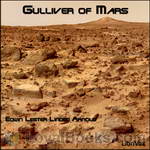 Gulliver of Mars
Gulliver of Mars
This escapist novel, first published in 1905 as Lieutenant Gullivar Jones: His Vacation, follows the exploits of American Navy Lieutenant Gulliver Jones, a bold, if slightly hapless, hero who is magically transported to Mars; where he almost outwits his enemies, almost gets the girl, and almost saves the day. Somewhat of a literary and chronological bridge between H.G. Wells and Edgar Rice Burroughs, Jones’ adventures provide an evocative mix of satire and sword-and-planet adventure. | |
By: Edwin Sharpe Grew (1867-1950) | |
|---|---|
 Romance of Modern Geology
Romance of Modern Geology
From the series, The Library of Romance, this book introduces the reader to the modern geology of the 1909, with topics that include the building and shaping of the earth, the action of weather, rivers, seas and ice on the earth, earthquakes and volcanoes, and, of course, dinosaurs and other extinct animals. - Summary by Ann Boulais | |
By: Elisha Gray (1835-1901) | |
|---|---|
 Nature's Miracles: Familiar Talks on Science
Nature's Miracles: Familiar Talks on Science
Elisha Gray (August 2, 1835 – January 21, 1901) was an American electrical engineer who co-founded the Western Electric Manufacturing Company. Gray is best known for his development of a telephone prototype in 1876 in Highland Park, Illinois and is considered by some writers to be the true inventor of the variable resistance telephone, despite losing out to Alexander Graham Bell for the telephone patent. | |
 Nature's Miracles Volume II: Energy and Vibration
Nature's Miracles Volume II: Energy and Vibration
Elisha Gray was an American electrical engineer who co-founded the Western Electric Manufacturing Company. Gray is best known for his development of a telephone prototype in 1876 in Highland Park, Illinois and is considered by some writers to be the true inventor of the variable resistance telephone, despite losing out to Alexander Graham Bell for the telephone patent.Nature’s Miracles: Familiar Talks on Science, published in 1900, is a discussion of science and technology for the general public. Volume II is subtitled Energy and Vibration: Energy, Sound, Heat, Light, Explosives. | |
By: Eliza Burt Gamble (1841-1920) | |
|---|---|
 Sexes in Science and History
Sexes in Science and History
In this revised second edition of her first book "The evolution of woman" (1894), subtitled "An inquiry into the dogma of woman's inferiority to man", Eliza Burt Gamble uses Darwin's theory of evolution and other scientific information to compare the development of the male and female organisms and describe their differences. Introducing the role of the woman in prehistoric society, we see how that changed through the course of history, from evidence both in less advanced tribes and in civilized historic societies, to the marked progress in the social and economic conditions of women in the time this edition was published (1916). | |
By: Elizabeth Blackwell (1821-1910) | |
|---|---|
 Pioneer Work in Opening the Medical Profession to Women
Pioneer Work in Opening the Medical Profession to Women
A fascinating account of the first woman to receive a medical degree in the United States. She writes of her struggles in being accepted to a medical school . She details her experiences while in the process of obtaining her degree, and her work both with patients and administratively, helping to found medical schools and hospitals for women. Summary by Phyllis Vincelli | |
By: Elizabeth Grinnell (1851-1935) | |
|---|---|
 Our Feathered Friends
Our Feathered Friends
This volume displays the romance of birds in beautiful prose and dialog in simple language for children and adults alike. Written by a mother and son team of naturalists, chapters describe various aspects of the life and habits of birds highlighting specific birds from owls to hummingbirds. From the introduction: “Seek the children, little book: Bid them love the bird's retreat . . . Bid them find their secrets out, How to understand their words.” - Summary by Larry Wilson | |
By: Elizabeth L. Banks (1865-1938) | |
|---|---|
 Campaigns of Curiosity: Journalistic Adventures of an American Girl in London
Campaigns of Curiosity: Journalistic Adventures of an American Girl in London
Elizabeth Banks was an American journalist who, at about age 23, moved to London. While trying to break into English journalism and to keep the wolf from the door, she struck upon the idea of hiring out as a housemaid in some London household and writing about her experiences. Subsequently, she became a street sweeper, flower-seller, and a laundress. On the flip side, she advertised as an heiress and demonstrated how easy it was for a wealthy American to "buy a pedigree" and entry into the higher social circles... | |
By: Ella Rodman Church (1831-) | |
|---|---|
 Among the Trees at Elmridge
Among the Trees at Elmridge
"On that bright spring afternoon when three happy, interested children went off to the woods with their governess to take their first lesson in the study of wild flowers, they saw also some other things which made a fresh series of "Elmridge Talks," and these things were found among the trees of the roadside and forest." | |
By: Ellen Churchill Semple | |
|---|---|
 Influences of Geographic Environment
Influences of Geographic Environment
INFLUENCES OF GEOGRAPHIC ENVIRONMENT ON THE BASIS OF RATZEL'S SYSTEM OF ANTHROPO-GEOGRAPHY BY ELLEN CHURCHILL SEMPLE PREFACE The present book, as originally planned over seven years ago, was to be a simplified paraphrase or restatement of the principles embodied in Friedrich Ratzel's _Anthropo-Geographie_. The German work is difficult reading even for Germans. To most English and American students of geographic environment it is a closed book, a treasure-house bolted and barred. Ratzel himself realized that any English form could not be a literal translation, but must be adapted to the Anglo-Celtic and especially to the Anglo-American mind... | |
By: Ellen Key (1849-1926) | |
|---|---|
 Woman Movement
Woman Movement
Ellen Key's 'The Woman movement' follows the development of the feminist movement striving towards a greater emancipation of women in the public sphere and overcoming the traditional perception of gendered activities. The Swedish feminist and this work combined with many more, served as a base for a lot of the 20th century feminist movements. | |
By: Emanuel Swedenborg (1688-1772) | |
|---|---|
 Soul or Rational Psychology
Soul or Rational Psychology
Swedenborg, Emanuel, 1688-1772, was born in Stockholm, Sweden and died in London, England. He was a voluminous writer of scientific treatises as well as prophetic works such as Archana Caelestia and The Divine Providence. He said he had encountered supranational agencies and communicated with angels. This is a recording of the 1849 translation of his 1743 book The Soul or Rational Psychology Latin. He took his cue from Aristotle's De Anima. A few quotes It has been shown above that the harmonies... | |
By: Emma Goldman (1869-1940) | |
|---|---|
 Anarchism and Other Essays
Anarchism and Other Essays
Chicago, May 4, 1886. In the Haymarket region of the city, a peaceful Labor Day demonstration suddenly turns into a riot. The police intervene to maintain peace, but they soon use violence to quell the mob and a bomb is thrown, resulting in death and injuries to scores of people. In the widely publicized trial that followed, eight anarchists were condemned to death or life imprisonment, convicted of conspiracy, though none of them had actually thrown the bomb. A young Russian immigrant, Emma Goldman, had arrived just the previous year in the United States... | |
 Deportation: Its Meaning and Menace. Last Message to the People of America
Deportation: Its Meaning and Menace. Last Message to the People of America
A pamphlet written by Alexander Berkman and Emma Goldman shortly before their deportation from the US in 1919. | |
By: Ernest Shackleton | |
|---|---|
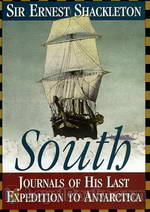 South! The Story of Shackleton's Last Expedition 1914-1917
South! The Story of Shackleton's Last Expedition 1914-1917
The expedition was given the grand title of The Imperial Trans-Antarctic Expedition. Due to be launched in 1914, two ships were to be employed. The first, the lead vessel, fittingly named the Endurance was to transport the team to the Weddell Sea from where the great explorer Ernest Shackleton and five others would cross the icy wastes of Antarctica on foot. The second ship, the Aurora was to approach the continent from the other side and put down supplies at various points to help the explorers... | |
By: Ernest Thompson Seton (1860-1946) | |
|---|---|
 Wild Animals I Have Known
Wild Animals I Have Known
Wild Animals I Have Known is an 1898 book by naturalist and author Ernest Thompson Seton. The first entry in a new genre of realistic wild-animal fiction, Seton's first collection of short stories quickly became one of the most popular books of its day. "Lobo the King of Currumpaw", the first story in the collection, was based upon Seton's experience hunting wolves in the southwestern United States. It became a classic, setting the tone for his future works that would similarly depict animals—especially predators who were often demonized in literature—as compassionate, individualistic beings. | |
By: Eva March Tappan (1854-1930) | |
|---|---|
 World’s Story Volume XIII: The United States
World’s Story Volume XIII: The United States
This is the thirteenth volume of the 15-volume series of The World’s Story: a history of the World in story, song and art, edited by Eva March Tappan. Each book is a compilation of selections from prose literature, poetry and pictures and offers a comprehensive presentation of the world's history, art and culture, from the early times till the beginning of the 20th century. Part XIII is the second volume of the history of the United States, exploring topics from the Civil War, the settlement on the West Coast, and new scientific discoveries from the 19th and early 20th centuries. - Summary by Sonia | |
By: F. J. Foakes-Jackson (1855-1941) | |
|---|---|
 Social Life in England 1750-1850
Social Life in England 1750-1850
In 1916, the Cambridge historian, F.J. Foakes-Jackson braved the wartime Atlantic to deliver the Lowell Lectures in Boston. In these wide-ranging and engaging talks, the author describes British life between 1750-1850. There are John Wesley's horseback peregrinations over thousands of miles of English countryside. Next, Foakes-Jackson introduces the mordant rural poet, George Crabbe, who began life as a surgeon apothecary and ended up as a parish rector who made house calls. He gives us a female convict, assorted Cambridge University dons, Regency fops and rakes, and Victorian slices of life from Dickens and Thackeray... | |
By: Fabian Franklin | |
|---|---|
 What Prohibition Has Done to America
What Prohibition Has Done to America
In What Prohibition Has Done to America, Fabian Franklin presents a concise but forceful argument against the Eighteenth Amendment of the U.S. Constitution. Beginning in 1920, this Amendment prohibited the sale and manufacture of alcoholic beverages in the United States, until it was repealed in 1933. Franklin contends that the Amendment “is not only a crime against the Constitution of the United States, and not only a crime against the whole spirit of our Federal system, but a crime against the first principles of rational government... | |
By: Fannie Hardy Eckstorm (1865-1946) | |
|---|---|
 The Woodpeckers
The Woodpeckers
The Woodpeckers is a wonderful introduction to the world of bird study for the young naturalist, covering such topics as how he finds food, courting, how he builds his nest, the interesting ways he uses his different body parts as tools, among other topics discussed in the book. If you wish to investigate further, the book has a few diagrams and an Appendix that contains more technical information such as detailed descriptions of the different species of North American woodpeckers which were not read as part of this audiobook. | |
By: Fleming Mant Sandwith (1853-1918) | |
|---|---|
 Sleeping Sickness
Sleeping Sickness
In the twenty-first century sleeping sickness is still a life-threatening disease of adults and children and a hazard to tourists in East African game parks.The protozoan parasite is transmitted by the tsetse fly, a buzzing insect with reddish eyes and a large biting proboscis. In 1912, when this short monograph was written, physicians of the British Empire understood that trans-continental expeditions manned by infected African porters, had set off an epidemic of sleeping sickness that had claimed half a million lives... | |
By: Florence Nightingale (1820-1910) | |
|---|---|
 Notes on Nursing
Notes on Nursing
Notes on Nursing was published in 1859 and is a fascinating view into the theories underpinning the early development of modern nursing and public health reform by "the Lady with the Lamp", Florence Nightingale. Emphasising common sense and thought for the patient's care in many more ways than just administering physician-prescribed medicines, this is still a very relevant book for those interested in health or caring for the sick and infirm today.Summary by Cori Samuel. | |
By: Ford Madox Ford (1873-1939) | |
|---|---|
 Soul of London
Soul of London
'Most of us love places very much as we may love what, for us, are the distinguished men of our social lives. [...] We are, all of us who are Londoners, paying visits of greater or less duration to a Personality that, whether we love it or very cordially hate it, fascinates us all. And, paying my visit, I have desired to give some such record. I have tried to make it anything rather than encyclopaedic, topographical, or archaeological. To use a phrase of literary slang I have tried to "get the atmosphere" of modern London -- of the town in which I have passed so many days; of the immense place that has been the background for so many momentous happenings to so many of my fellows.' | |
By: Frances Swain | |
|---|---|
 Food Guide for War Service at Home
Food Guide for War Service at Home
"The long war has brought hunger to Europe; some of her peoples stand constantly face to face with starvation. To meet all this great food need in Europe—and meeting it is an imperative military necessity—we must be very careful and economical in our food use here at home. We must eat less; we must waste nothing; we must equalize the distribution of what food we may retain for ourselves; we must prevent extortion and profiteering which make prices so high that the poor cannot buy the food they actually need; and we must try to produce more food... | |
By: Francis Bacon (1561-1626) | |
|---|---|
 The New Atlantis
The New Atlantis
In 1623, Francis Bacon expressed his aspirations and ideas in New Atlantis. Released in 1627, this was his creation of an ideal land where people were kind, knowledgeable, and civic-minded. Part of this new land was his perfect college, a vision for our modern research universities. Islands he had visited may have served as models for his ideas. | |
By: Francis M. Walters | |
|---|---|
 Physiology and Hygiene
Physiology and Hygiene
Physiology and Hygiene for Secondary Schoolsby Francis M. Walters, A.M.PREFACE The aim in the preparation of this treatise on the human body has been, first, to set forth in a teachable manner the actual science of physiology; and second, to present the facts of hygiene largely as applied physiology. The view is held that right living consists in the harmonious adjustment of one's habits to the nature and plan of the body, and that the best preparation for such living is a correct understanding of the physical self... | |
By: Francis Rolt-Wheeler (1876-1960) | |
|---|---|
 Science - History of the Universe Vol. 4: Chemistry
Science - History of the Universe Vol. 4: Chemistry
Multi-volume work on science edited by Francis Rolt-Wheeler. The fourth volume is on Chemistry written by William Allan Hamor. It discusses the development of chemical knowledge, from the ancients to modern times. It expanded further on the early works of alchemists and into the phlogistic period. The last chapters cover atomic theories and the development of organic and inorganic chemistry. - Summary by Sienna | |
 Science - History of the Universe Vol. 3: Physics & Electricity
Science - History of the Universe Vol. 3: Physics & Electricity
Multi-volume work on science edited by Francis Rolt-Wheeler. The third volume is on physics written by George Matthew and on electricity written by Professor William J. Moore. The section on physics covers matter - analysis and properties, heat, light - its sources and its nature, and sound. On the subject of electricity, it discusses the nature of electricity, electrostatics, fundamental discoveries in electric science and how electro-chemistry was developed and electromagnetic machines. It also details technologies advanced by discovery of electricity and electromagnetism such as electric lighting, the telephone, electric railway, telegraph and wireless telegraphy... | |
 Science - History of the Universe Vol. 2: Geology
Science - History of the Universe Vol. 2: Geology
Multi-volume work on science edited by Francis Rolt-Wheeler. The second volume is on Geology written by Harold E. Slade and W. E. Ferguson. This book covers the early efforts in and beginnings of geological concepts, development of the science through the 19th century and its different branches or field of study. It also discusses various geological processes. - Summary by Sienna | |
 Science - History of the Universe Vol. 5: Biology
Science - History of the Universe Vol. 5: Biology
Multi-volume work on science edited by Francis Rolt-Wheeler. The fifth volume is on Biology written by Caroline E. Stackpole. It discusses biology being the science of life and life’s nature and origins. It furthers explains functions and processes necessary for this life. It also covers evolution and factors that affect evolution. - Summary by Sienna | |
 Science - History of the Universe Vol. 7: Anthropology & Medicine
Science - History of the Universe Vol. 7: Anthropology & Medicine
Multi-volume work on science edited by Francis Rolt-Wheeler. The seventh volume is on Anthropology written by the editor himself and on Medicine written by Theodore H. Allen. An introduction to the Anthropology section was written by Frederick Starr. The section on Anthropology discusses its role in science, explains different human races, delved into prehistoric archaeology and further into the development of culture. The section on Medicine goes through medical knowledge from the ancients, Greeks, Romans, Arabians and all the way to the 17th to 19th century. It examined how these different eras affected the progress of medicine. - Summary by Sienna | |
 Science - History of the Universe Vol. 8: Mathematics
Science - History of the Universe Vol. 8: Mathematics
Multi-volume work on science edited by Francis Rolt-Wheeler. The eighth volume is on Pure Mathematics written by L. Leland Locke and on Mathematical Applications written by Dr. Franz Bellinger. An introduction was written by Professor Cassius J. Keyser with a special section on the Foundation of Mathematics. The Pure Mathematics section discusses numbers - its conception and calculations, as well as different areas of mathematics - algebra, geometry, trigonometry. The last section goes into the different applications of mathematics. - Summary by Sienna | |
 Science - History of the Universe Vol. 6: Zoology & Botany
Science - History of the Universe Vol. 6: Zoology & Botany
Multi-volume work on science edited by Francis Rolt-Wheeler. The sixth volume is on Zoology written by Dr. WM. D. Matthew and on Botany written by Marion E. Latham. The section on Zoology examines the development, evolution and distribution of animals. It further discusses types of animals - invertebrates and vertebrates. The section on botany touched on early development of botany and delved on structures and reproduction of plants. Development of the study of morphology and plant cell anatomy and variations were also examined. | |
 Science - History of the Universe Vol. 1: Astronomy
Science - History of the Universe Vol. 1: Astronomy
Multi-volume work on science edited by Francis Rolt-Wheeler. The first volume is on Astronomy written by Waldemar Kaempffert. This book briefly discusses the evolution of astronomical beliefs and the development of instruments and progress of methods in the science. It explains, further, the different astronomical laws, theories, phenomena and objects, as well as the history of these discoveries. | |
By: Francis Tiffany (1827-1908) | |
|---|---|
 Life of Dorothea Lynde Dix
Life of Dorothea Lynde Dix
A biography of a woman who advocated for the humane treatment of people with mental illness. As a young woman travelling overseas, Dorothea Dix met with people who were interested in reforming how the mentally ill were treated. Returning to America, she pushed for changes and proper care for these individuals, meeting with strong resistance. Her work ultimately resulted in social reform and the creation of asylums. Dorothea Dix was a tireless crusader and instrumental in important social reforms in the United States and the world. - Summary by Phyllis Vincelli | |
By: Frank Allaben (1867-1927) | |
|---|---|
 Concerning Genealogies
Concerning Genealogies
Written over a century ago, this comprehensive book offers insight into the methods used to research and compile a family history. As stated in the preface of the book, "Strong emphasis is laid upon the importance of employing the historical method..." which is sorely lacking in today's computerized compilations. - Summary by Roger Melin | |
By: Frank G. Carpenter (1855-1924) | |
|---|---|
 Alps, the Danube and the Near East
Alps, the Danube and the Near East
Journeying through many countries including Romania, Bulgaria, Turkey, Switzerland and Greece, the author gives an in-depth account of many aspects of the culture of the times and the people of the regions. | |
 Carpenter's World Travels: Alaska Our Northern Wonderland
Carpenter's World Travels: Alaska Our Northern Wonderland
Early twentieth century travel book about Alaska with stories of major cities, Indian tribes, customs and geography of what would become our 49th state. - Summary by BettyB. | |
By: Frank Henderson | |
|---|---|
 Six Years in the Prisons of England
Six Years in the Prisons of England
A Merchant talks about daily life inside prisons of England, describes routines and how prisoners are treated. He notes stories of how fellow prisoners came to be in prison, and his ideas about the penal system, its downfalls and ways to improve it. The reader can see similarities to the problems we still have in regarding "criminals" today. (Introduction by Elaine Webb) | |
By: Frank Richard Stockton | |
|---|---|
 Round-about Rambles
Round-about Rambles
ROUND-ABOUT RAMBLES, In Lands of FACT AND FANCYBY FRANK R STOCKTONPREFACECome along, boys and girls! We are off on our rambles. But please do not ask me where we are going. It would delay us very much if I should postpone our start until I had drawn you a map of the route, with all the stopping-places set down. We have far to go, and a great many things to see, and it may be that some of you will be very tired before we get through. If so, I shall be sorry; but it will be a comfort to think that none of us need go any farther than we choose... | |
By: Frantz Funck-Brentano (1862-1947) | |
|---|---|
 Princes and Poisoners: Studies of the Court of Louis XIV
Princes and Poisoners: Studies of the Court of Louis XIV
The court of French King Louis XIV was not a safe place to be. It was filled with plots and intrigues, leaving observers and commentators with more questions than answers among speculation and innuendo. Funck-Brentano was a scholar, librarian and expert on the political climate of eighteenth century France. Backing up his work with research in the archives of the Bastille, he attempts to explain and throw light on the tumultuous times. - Summary by Lynne Thompson | |
By: Frederic Lucas (1852-1929) | |
|---|---|
 Animals of the Past
Animals of the Past
Prior to the emergence of paleontology and comparative anatomy as scientific disciplines at the end of the 18th century, it was generally known that there were species of animals that had disappeared completely. The term "extinction" originally applied to the extinguishing of fires or erasing of one's debt. It was not until 1784 that the term extinction was used to denote the complete eradication of a species of living being. In 1901, Frederic A. Lucas penned an overview of vertebrate animals whose only evidence of being remained in fossil records. The book focuses primarily on vertebrate animals, from fish to mammals. - Summary by Jeffery Smith | |
By: Frederick Adam Wright (1869-1946) | |
|---|---|
 Feminism in Greek Literature
Feminism in Greek Literature
This study, published in 1923, examines the views regarding women's place in Ancient Greek society based especially on the writings of Homer, Euripides, Aristophanes, Plato, Socrates and Aristotle. As the author offers his opinion and judgement, that at times reflect views on women, homosexuality and other social groups and themes that might be considered controversial now, he leaves an interesting picture of the state of Classical scholarship in the early 20th century. "There is a question sometimes... | |
By: Frederick Adams Woods (1873-1939) | |
|---|---|
 Mental and Moral Heredity in Royalty. A Statistical Study in History and Psychology
Mental and Moral Heredity in Royalty. A Statistical Study in History and Psychology
Frederick Adams Woods examined the biographical records and family trees of the great dynasties of Europe, judging and comparing their moral standards and intellectual aptitude to their reputation as rulers. The summarised family histories are produced after a painstaking search including portrait galleries, family lineage, comparisons of reputation, and the origin of allegations of madness and moral bankruptcy, all collated within a single volume. - Summary by Leon Harvey | |
By: Frederick Czapek (1868-1921) | |
|---|---|
 Chemical Phenomena in Life
Chemical Phenomena in Life
Published in 1911 as part of the "Harper's Library of Living Thought," this volume presents an introduction to the chemistry of cells in the context of plant physiology and gives an interesting overview of the field of biochemistry and related sciences at the time. The author, Frederick Czapek, was a Czech botanist and professor of Plant Physiology at the University of Prague. He is perhaps best known for his two-volume work on Plant Physiology, "Biochemie der Pflanzen" and for Czapek solution agar or Czapek-Dox medium, a culture medium for cultivation of fungus species such as Aspergillus and Penicillium molds. ( | |
By: Frederick G. Aflalo (1870-1918) | |
|---|---|
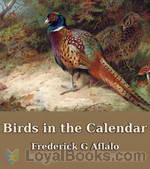 Birds in the Calendar
Birds in the Calendar
Delightful sketches of British wild birds – a bird for every month of the year from the pheasant in January to the robin in December. This collection of articles, reprinted in book form from the periodical The Outlook, is full of fascinating information about bird behaviour and habitat, as well as many interesting anecdotes. Out of date in some respects, particularly in its reference to the (now illegal) collecting of birds’ eggs, this book brings home forcefully how the populations of some British wild birds have declined since it was written. | |
By: Frederick Schwatka (1849-1892) | |
|---|---|
 In the Land of Cave and Cliff Dwellers
In the Land of Cave and Cliff Dwellers
An adventurer and explorer of no mean repute, Lieutenant Frederick Schwatka leads an expedition by mule train into the forbidding Sierra Madre mountains of Mexico to one of the richest silver mining regions in the world. He offers lively descriptions of the the unfamiliar flora and fauna of this often desolate region, of the cliff and cave dwellings inhabited and abandoned, and of the social customs of the various peoples he meets. He marvels at the unmatched running prowess of the Rarámuri Indians of the Barranca del Cobre--the famous Copper Canyon of Chihuahua State. He writes always with humor that keeps the narrative light and the reader smiling. | |